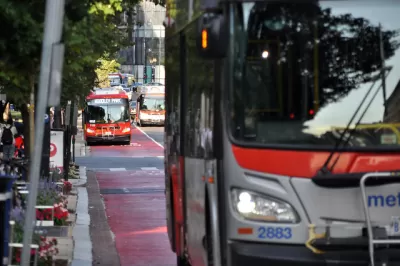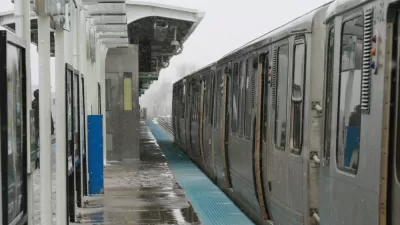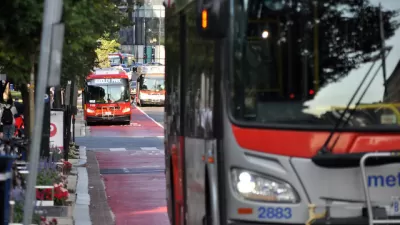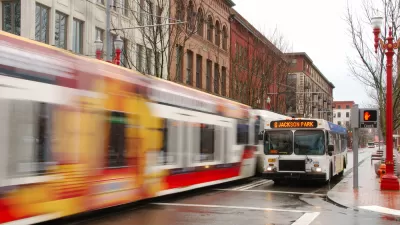Transit service in the District has not yet recovered to pre-pandemic levels, with Black and low-income riders feeling the brunt of the impact.

A blog post from TransitCenter, using data from their Transit Equity Dashboard, assesses the state of Washington, D.C.’s post-Covid transit recovery, which, according to the post, “has been slow and bumpy.”
Unlike other cities that have restored service to pre-pandemic levels, the blog notes that “In August 2022, Washingtonians could access only 91% of the jobs that were accessible by transit in February 2020. In fact, since March 2020, DC residents have never had a level of transit access equal to before the pandemic.”
When it comes to equity, the picture is equally bleak. “White and Asian communities consistently have much better transit service than Black, Hispanic, and low-income communities across every tracked metric. This is despite the fact that Black and Hispanic people are more likely to commute by transit – 17% of Black and Hispanic residents of the District commuted on public transit in 2021, compared to only 7% of White and Asian residents.” Black District residents are able to access 55 percent as many jobs as white residents, 5 percent lower than before the pandemic disrupted transit services. Black residents also have longer trips to reach their nearest hospital.
The blog notes that D.C. transit services are slowly improving, but vast racial and economic disparities remain. See the blog post, linked below, for more details on the District’s transit recovery.
FULL STORY: Checking in on Washington DC’s Transit Recovery

Planetizen Federal Action Tracker
A weekly monitor of how Trump’s orders and actions are impacting planners and planning in America.

San Francisco's School District Spent $105M To Build Affordable Housing for Teachers — And That's Just the Beginning
SFUSD joins a growing list of school districts using their land holdings to address housing affordability challenges faced by their own employees.

The Tiny, Adorable $7,000 Car Turning Japan Onto EVs
The single seat Mibot charges from a regular plug as quickly as an iPad, and is about half the price of an average EV.

With Protected Lanes, 460% More People Commute by Bike
For those needing more ammo, more data proving what we already knew is here.

In More Metros Than You’d Think, Suburbs are Now More Expensive Than the City
If you're moving to the burbs to save on square footage, data shows you should think again.

The States Losing Rural Delivery Rooms at an Alarming Pace
In some states, as few as 9% of rural hospitals still deliver babies. As a result, rising pre-term births, no adequate pre-term care and "harrowing" close calls are a growing reality.
Urban Design for Planners 1: Software Tools
This six-course series explores essential urban design concepts using open source software and equips planners with the tools they need to participate fully in the urban design process.
Planning for Universal Design
Learn the tools for implementing Universal Design in planning regulations.
Smith Gee Studio
City of Charlotte
City of Camden Redevelopment Agency
City of Astoria
Transportation Research & Education Center (TREC) at Portland State University
US High Speed Rail Association
City of Camden Redevelopment Agency
Municipality of Princeton (NJ)





























